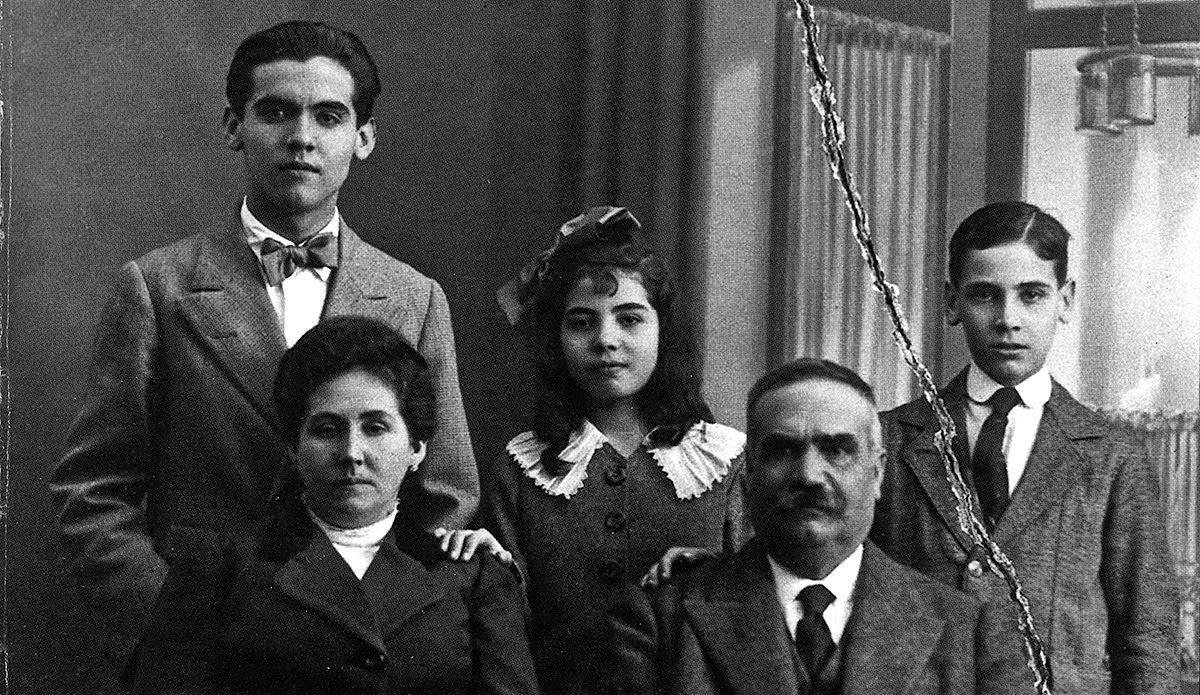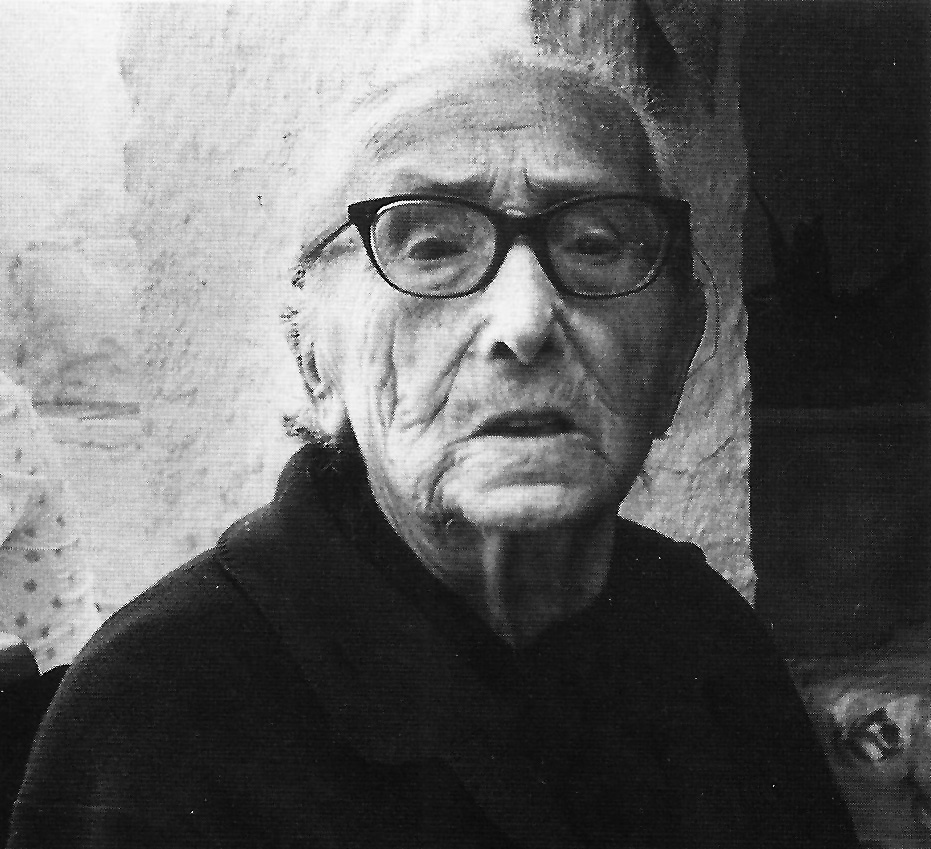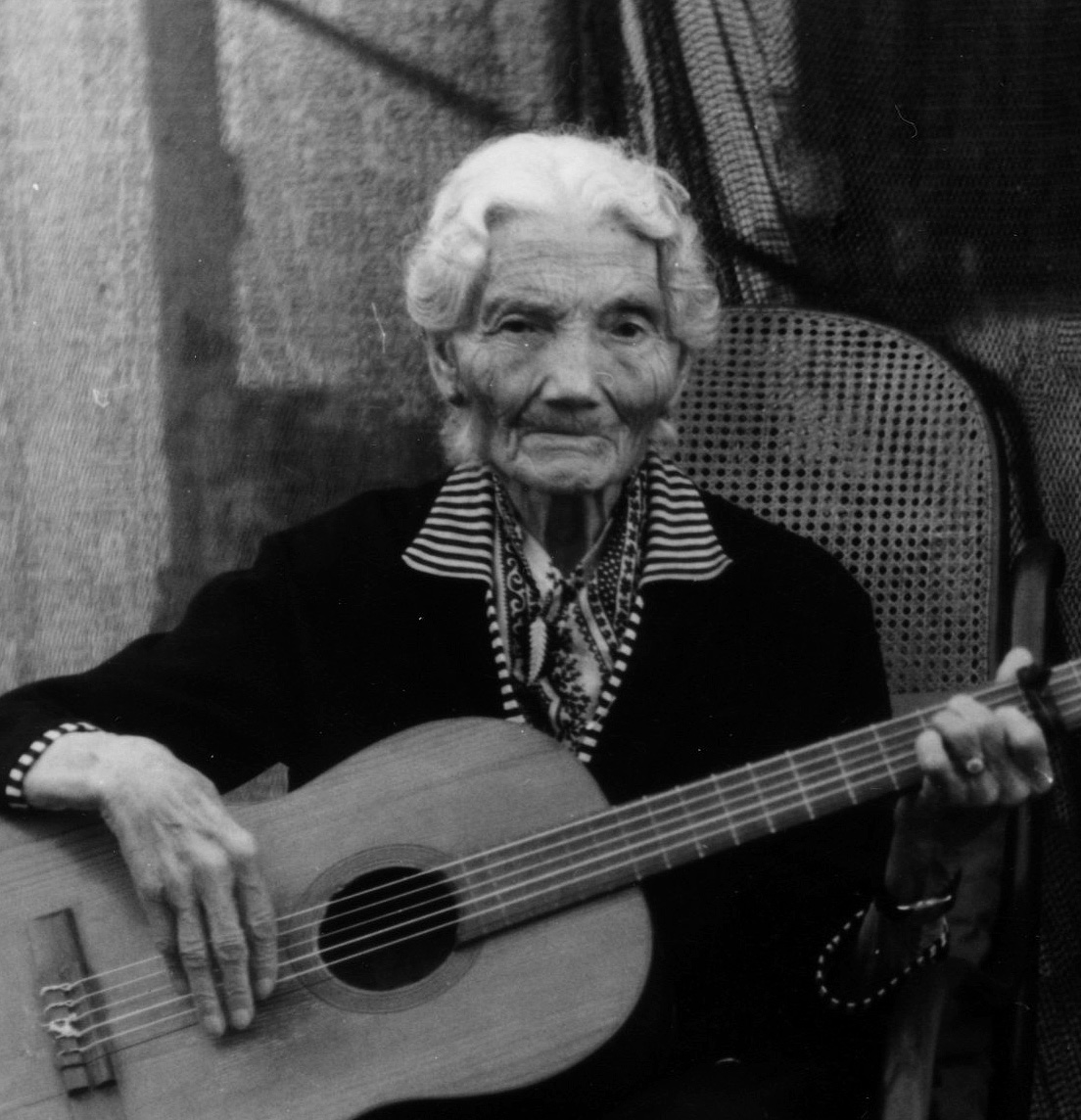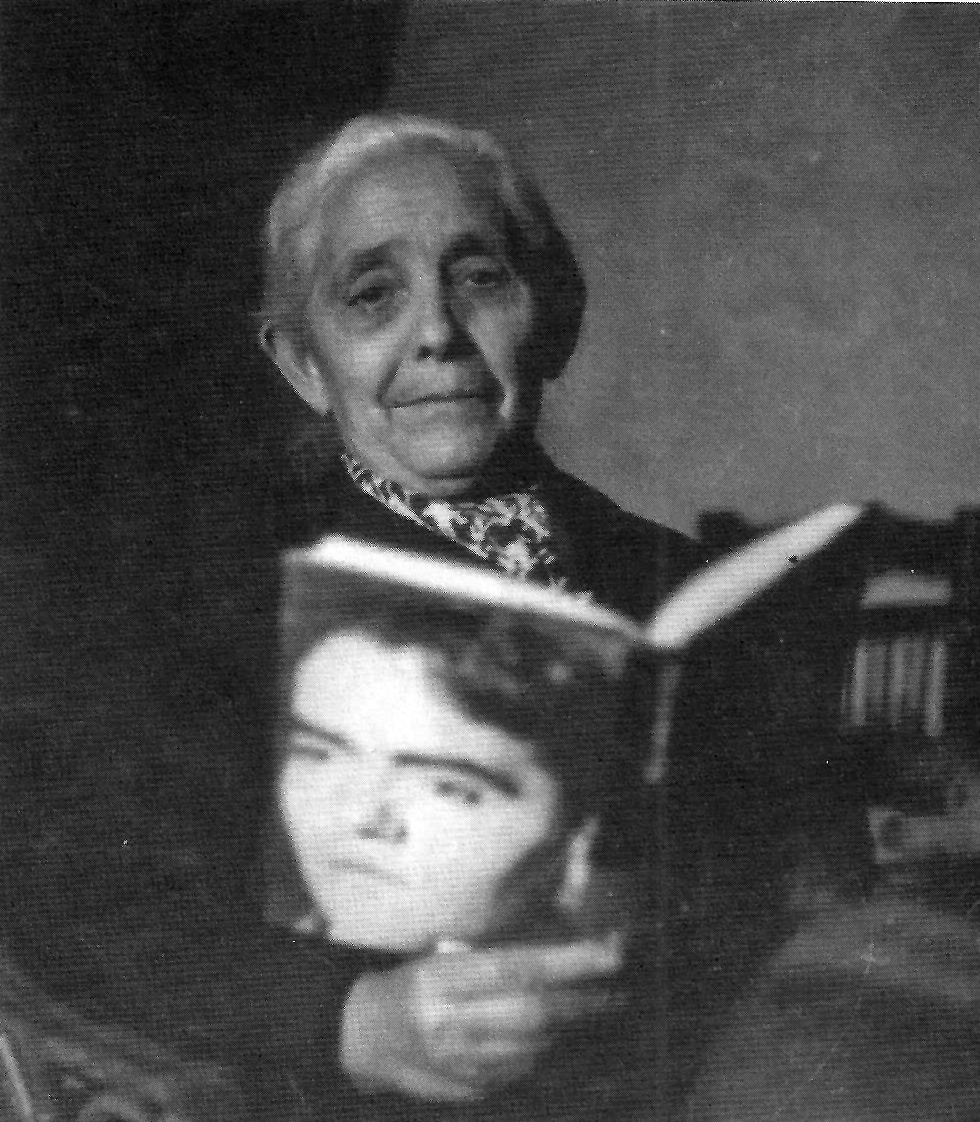The oldest and most peculiar maid of the García Lorca family, Dolores Cuesta Cañete, nicknamed La Colorina, because her father, known as the Pae Santo for his insistence on shrouding all the deceased of the village, sold canaries (called colorines in Granada). She was born in Íllora (or Láchar, according to other versions) around 1870. The year is approximate because not even she knew it. In the 1910 municipal census of Granada, when everyone moved from the Vega to the Acera del Darro, she was born on February 10, 1868. In the 1914 census, however, her birth is dated March 15, 1870. In the 1921 census, when they were already living in the Acera del Casino, Dolores surprisingly does not appear. This confusion, when asked, was usually resolved by saying that she was born on the same date as “my lady” Vicenta Lorca, in 1870. She entered the service of the family when they were still living in Fuente Vaqueros as housekeeper to Francisco (born 1902) and followed them to Granada with tenacious fidelity. She accompanied them during the tragic summer of 1936 and when, after Federico and his brother-in-law Manuel Fernández-Montesinos had been murdered, they took refuge in their last home in Manuel del Paso street. It was she who brought home the news that Madrid had fallen, which prompted Federico García Rodríguez to order everyone to go into exile. The distance did not diminish the loyalty and she waited until the Lorca’s returned to Madrid in 1952. La Colorina inspired Federico for many of the characters, particularly those of the maids and mistresses in his comedies and secondary characters such as the Old Pagan of Yerma, although Isabel García Lorca is of the opinion (My Memories), on the contrary, that it was Federico who illuminated the maid’s fantasy.
Despite her strong character and willingness to take care of everything and everyone, to the point of provoking Vicenta Lorca’s jealousy with her manifestations of affection towards her children, Dolores was marked by a painful history. After the death of her first husband, she married another violent man who even abused one of her four daughters. Dolores’ reaction, faced with the impossibility of raising her offspring, was to place the girls in the hospice. The protests of the nuns who ran the institution were to no avail in the face of the mother’s determination.
Dolores was absolutely faithful to the Lorca family throughout her life. She followed them in all her moves and treated the four brothers as her children, which provoked Doña Vicenta’s jealousy.
“I remember Dolores,” recalls Francisco García Lorca in his memoirs, “dressed in black, which did not go with her very cheerful character. She had a picturesque language; some of her expressions have passed into Federico’s work”. She was illiterate by conviction: all Vicenta Lorca’s efforts to teach her to read and write were useless. She never learned to pronounce “cathedral”; despite Isabel’s efforts, she repeated “catedrá” over and over again. Her love for the four García Lorca brothers was inordinate: she granted them every whim and played along when they, especially Federico, invented some mischief in which La Colorina was obliged to participate. Francisco remembers how one day when she went to pick up his sister Concha at the Calderón school, run by a congregation of very domineering French nuns, she threatened to “cut the throat of Sister Garnier”, one of the nuns, when she discovered that the girl was confined in a narrow room without light because of her supposed misbehavior. She used to use the possessive with the brothers (my Paco, my Federico…) which apparently irritated Doña Vicenta.
In the house on the Acera del Darro, La Colorina was the undoubted protagonist and competed consciously or not with the mother. This, at least, is how Isabel recalls it in her memoirs, devoting an entire chapter to the maid: “I saw Dolores as the mistress of everything, and in that wonderful kitchen at 60 Acera del Darro, she was the queen and I was a permanent visitor”. As the Aunt and the Mistress of Doña Rosita, every Sunday she quarreled with Doña Vicenta, who used to unfailingly end the dispute with “I don’t know why I put up with her!”. “Our house was really hers and we were almost her children,” says Isabel. When Doña Vicenta fell ill and had to spend time in a clinic in Málaga, the burden of the house fell on La Colorina and Isabel García Rodríguez, sister of Lorca’s father who had lived with them since the move to Granada in 1910.
Although she detested the priests, when she saw an unsolvable problem she went to the neighboring Church of the Virgen de las Angustias. The deaf competition she had with Doña Vicenta was transformed into affection and complicity with the children she played along with. Isabel remembers that she fed herself with coffee and that she would accompany her brothers until the small hours of the morning during the tute games. She was the one who would prepare Federico’s “illuminated coffees”, a drink to which she would add a generous splash of aniseed liqueur.
Federico was nicknamed Foederis Arca, that is, Ark of the Covenant, a locution whose meaning he did not know but which he remembered from the litany with which the rosary was prayed. And when in October 1932 La Barraca traveled to Granada and represented in the old barracks of Santo Domingo the Entrées by Cervantes, La Colorina was in the front row. Her fondness for theater was not passive. Isabel remembers how Federico included her, with an elaborate makeup along with other maids, in a homemade representation of The Fortress of Pearls, by Villaespesa, whose verses she came to memorize. That same night, recalls Francisco García Lorca, and with the theatrical characterization reinforced with an umbrella, Federico challenged her to go in that guise to the Cervantes Theater to buy peanuts. Of course she accepted.
La Colorina was there in good times and bad. After the assassination of Federico and his brother-in-law, the socialist mayor of Granada, the family took refuge in Manuel del Paso Street. “Dolores was coming from picking up a pair of my mother’s shoes,” writes Manuel Fernández-Montesinos García-Lorca in his memoirs. “She would come running and crying and shouting. Apart from the terrible message she brought, what impressed me was that she was carrying that pair of women’s shoes in her hand and that, to wipe away her tears, she put her hands up to her face, without letting go of them, while she kept screaming half hidden behind the black shoes that were swaying in front of her little eyes like two hanged men. She brought the worst news: ‘Madrid has fallen, Madrid has fallen!” It was the beginning of the exile.
In spite of the separation during the war, Isabel specifies, “Dolores was always thought of, she was always helped. Paco never stopped doing so and, when she died [on a date as imprecise as that of her birth, back in the fifties], he ordered a solemn burial for her […]. Paco’s astonishment could not have been greater when he found that she had left everything planned, everything chosen, everything arranged and paid for: she had saved all her life for her burial”.



